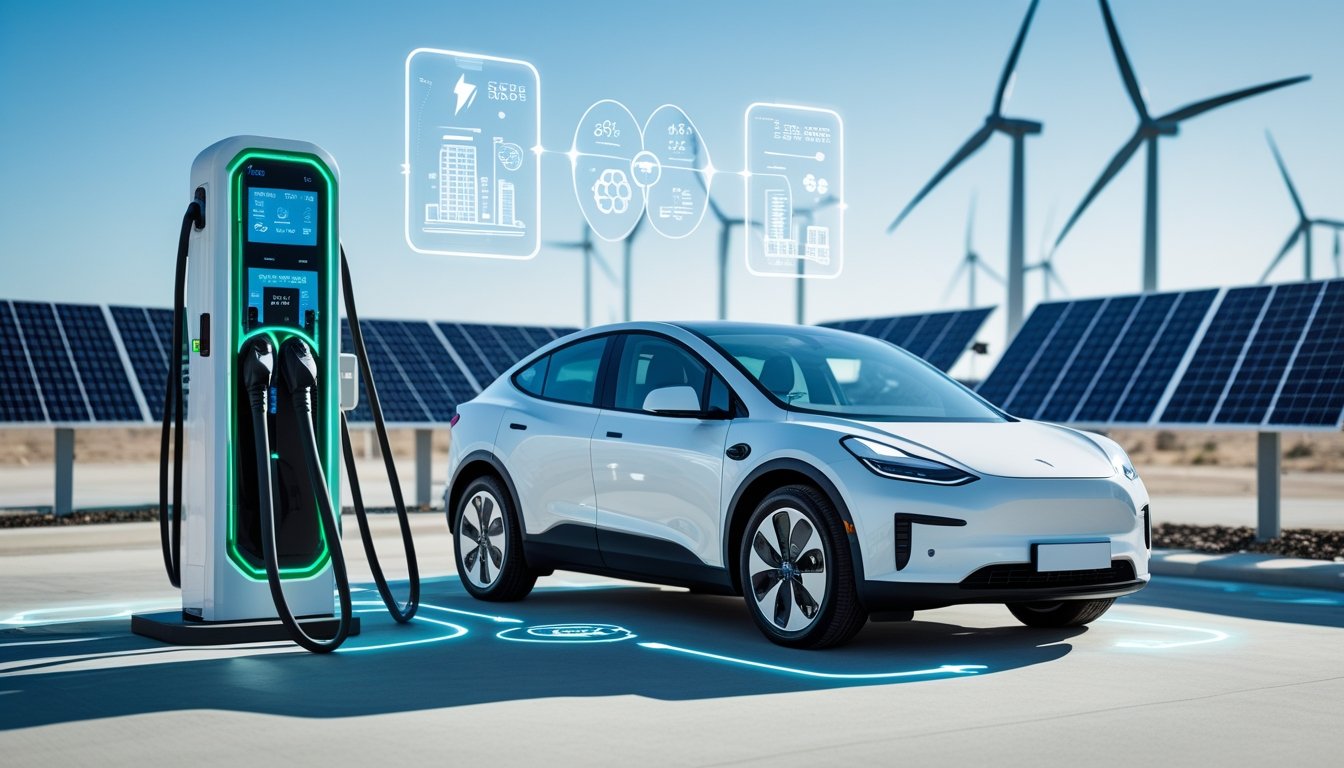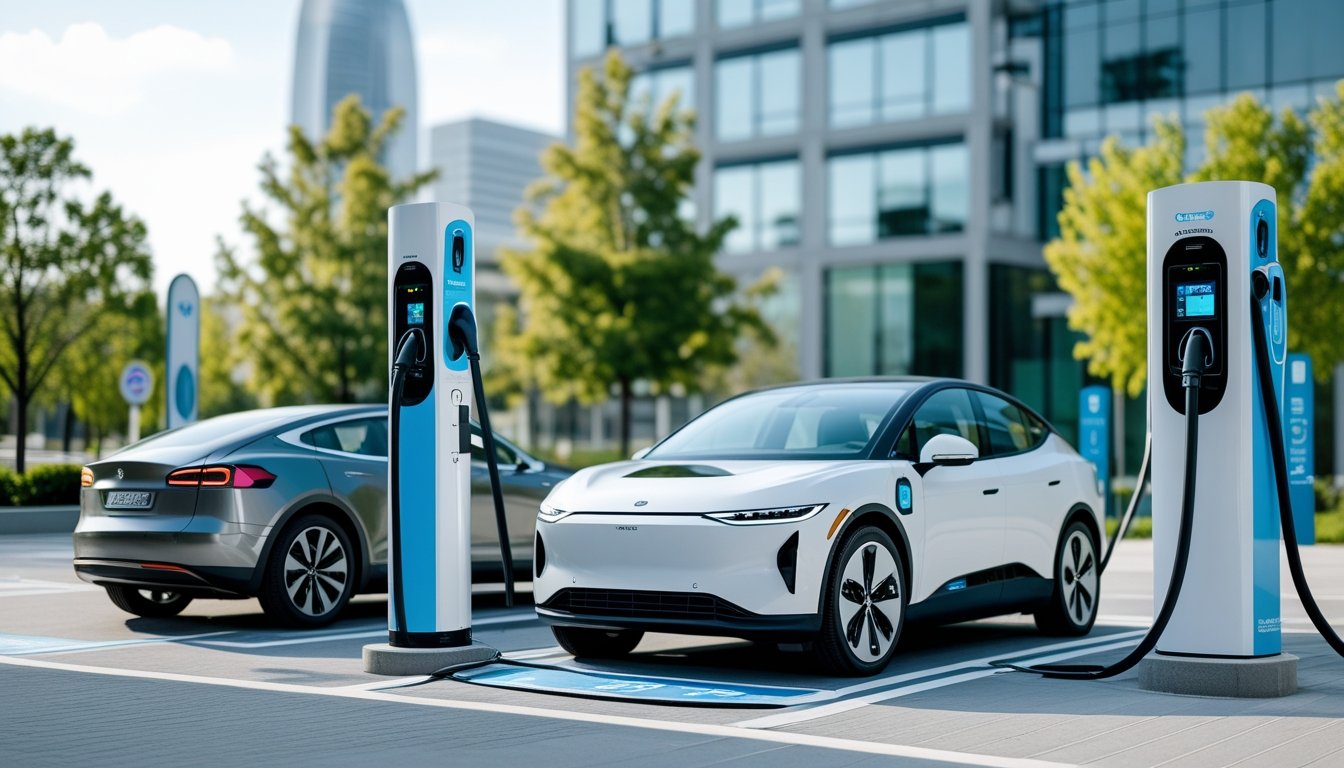Late updated: 22 Jul 2025 09:07
Written by: Amber Collins
The Evolution Of Electric Vehicle Charging Technology: Advancements and Future Trends
The world of electric vehicles (EVs) has undergone dramatic changes, especially in how these innovative machines are powered. As more individuals shift towards environmentally friendly transport, it becomes vital to appreciate how the technology behind EV charging has evolved. From basic setups to intricate, efficient systems, EV charging technology has continually adapted to meet the demands of modern transportation.

Looking back, we can trace significant milestones that have shaped this evolution, such as the introduction of fast-charging methods and infrastructure developments to support a burgeoning market. The landscape of EV charging is not just about plugging in; it involves sophisticated technologies and components designed for optimal efficiency and convenience.
The journey of EV charging technology includes an array of advancements and trends that promise to redefine how we engage with zero-emission vehicles. As we continue to adopt these green technologies, understanding these developments is essential for consumers and industry stakeholders alike.
Key Takeaways
- EV charging has advanced from basic setups to sophisticated systems.
- Key innovations have defined and propelled the technology forward.
- Understanding these developments is crucial for all involved.
Key Milestones in the Evolution of Electric Vehicle Charging
The journey of electric vehicle charging has undergone significant transformations, characterised by notable milestones that set the stage for modern systems. Our discussion covers early systems, advancements to faster charging technologies, and the growth of public charging networks.
Early Charging Systems and Their Limitations
The initial phase of EV charging relied on simple systems that were basic and often inconvenient for daily use. These early setups typically involved connecting vehicles to standard electrical outlets. Although pioneering, they suffered from slow charging speeds, thus limiting practicality for users. Charging infrastructure was sparse, and public charging stations were almost non-existent, hampering the growth of the electric vehicle market. Safety concerns due to lack of standardisation were also prevalent, adding to user apprehension. As EV technology developed, the need for more efficient and user-friendly solutions became apparent, prompting the industry to innovate.
Advent of Level 1, Level 2, and DC Fast Charging
The introduction of Level 1 and Level 2 charging marked an evolution from rudimentary systems. Level 1 charging uses a standard home outlet, providing a viable but slow option for overnight charging. Level 2 chargers, operating on a 240-volt system, significantly improved charging speeds, offering versatility and convenience for both home and commercial use. The shift to DC Fast Charging revolutionised the landscape by drastically reducing charging time, turning what once took hours into mere minutes. These advancements not only improved accessibility but also drove the need for a widespread charging infrastructure, encouraging more public and private investment.
Rise of Charging Networks and Public Infrastructure
The rise of charging networks and infrastructure marked a pivotal milestone in the adoption of electric vehicles. Companies invested heavily in developing widespread and reliable charging station networks, easing anxiety over range limitations. These networks often feature advanced technology, including remote monitoring and user interfaces that offer seamless payment and station locating. Public and private sectors collaborated to expand the reach of these networks, making long-distance travel feasible and convenient for EV drivers. The increased presence of public stations has been crucial in popularising electric vehicles, enabling a more sustainable and practical approach to transportation.
Innovations and Trends Shaping EV Charging Technology

The landscape of electric vehicle (EV) charging is undergoing significant changes, driven by technological innovations and increasing demand. We explore how advancements such as ultra-fast and wireless charging, smart networks, vehicle-to-grid integration, and renewable energy are transforming the industry.
Ultra-Fast Charging Capabilities
Ultra-fast charging technology represents a leap forward in the EV sector. By significantly reducing charging times, it enhances the practicality of electric vehicles for daily use. Advances in battery technology make it possible to charge a car in minutes, not hours.
Key Features:
- Charging stations delivering up to 350 kW.
- Rapidly expanding infrastructure along major highways.
- Enhancements in heat management and cable efficiency.
These developments facilitate longer journeys and reduce "range anxiety." They also have the potential to attract more consumers by offering quick and convenient charging solutions.
Wireless Charging and Inductive Systems
Wireless charging simplifies the EV experience by eliminating cables. Inductive charging systems transfer power through electromagnetic fields, allowing vehicles to charge by merely parking on top of a charging pad.
Advantages:
- Ease of Use: Simplifies the charging process.
- Infrastructure Integration: Pads can be installed in roads, parking lots, and garages.
- Safety Improvements: Reduces wear and tear on connectors and cables.
While still in early adoption, continuous improvements and cost reductions are expected to bolster its popularity among EV users.
Smart Charging Networks and Intelligent Algorithms
Smart charging utilises algorithms to optimise energy distribution and pricing, ensuring efficient use of resources. These networks are pivotal in managing demand and preventing grid overloads.
Functionality Includes:
- Demand Response: Adjusts charging rates based on real-time load.
- User Optimisation: Customises schedules to match energy prices and consumption patterns.
- Grid Interaction: Enhances communication between vehicles and the grid.
The implementation of intelligent systems supports energy efficiency and user convenience, aligning with the move towards a smart energy ecosystem.
Vehicle-to-Grid Integration and Grid Stability
Vehicle-to-grid (V2G) technology enables EVs to discharge energy back into the grid. This interaction stabilises electrical networks and supports renewable energy sources.
Benefits:
- Grid Support: Reduces peak demand and enhances grid resilience.
- Renewable Energy Harnessing: Balances intermittent energy supply.
- Economic Incentives: Offers users financial returns for feeding energy back.
V2G’s integration represents a strategic shift in energy management, encouraging more sustainable usage of EVs in conjunction with other energy resources.
Renewable Energy Integration in Charging Solutions
Integrating renewable energy with EV charging stations reduces carbon footprints and fosters sustainability. Solar panels and wind turbines are increasingly being linked to charging infrastructure.
Strategies:
- On-site Renewables: Power stations directly from solar or wind.
- Stationary Storage: Utilises batteries to store surplus energy.
- Grid Combination: Supplements renewables with traditional power only when necessary.
These efforts not only contribute to environmental goals but also offer economic efficiency, reducing operational costs in the long term.
Standardisation and Interoperability Challenges
Standardisation and interoperability are crucial for ensuring seamless EV charging access across different platforms and networks.
Current Efforts:
- Universal Connectors: Development of common plugs and interfaces.
- Cross-Network Compatibility: Enables users to charge at any station.
- Regulatory Frameworks: Harmonises industry standards at international levels.
Overcoming these challenges is essential for fostering widespread consumer adoption and creating a cohesive charging network globally.
Frequently Asked Questions

Our exploration of electric vehicle charging technology examines the advancements from basic chargers to sophisticated systems, focusing on technological progress, rapid charging, wireless charging, and the integration with software and smart grids.
How has electric vehicle charge point technology progressed over the years?
Electric vehicle charge point technology has come a long way since the basic chargers of the 1990s. Early systems were simple and slow, often requiring several hours for a full charge. Modern chargers are much faster, capable of charging an EV in just a few hours or even minutes, thanks to innovations in charging power and efficiency.
What are the current advancements in ultra-fast charging for EVs?
Ultra-fast charging technology has significantly advanced, delivering impressive charging speeds that can provide up to 80% battery capacity in under 30 minutes. These advancements are made possible by higher power levels reaching up to 350 kW in some stations, reducing vehicle downtime and enabling longer trips without extensive charging stops.
How are wireless charging systems for electric vehicles influencing the market?
Wireless charging systems are becoming more prevalent, offering convenience without the need for cables. These systems work through inductive charging pads, allowing vehicles to charge simply by parking over them. The influence on the market is notable, as they potentially increase the adoption rate of EVs by enhancing ease of use and integrating seamlessly into urban infrastructure.
What role does software play in the advancement of EV charging systems?
Software is crucial in the evolution of EV charging systems. It enables smart charging, energy management, and integration with renewable energy sources. Plus, the software-driven solutions facilitate charging station network management, user authentication, and payment processing, making the charging experience more seamless and effective for users.
How is smart grid integration affecting electric vehicle charging solutions?
Smart grid integration is enhancing EV charging solutions by enabling bidirectional energy flow between vehicles and the grid. This technology optimises energy use, reduces costs, and stabilises the grid during peak times. This integration supports a more efficient and resilient energy system, accommodating the growing number of electric vehicles.
What are the anticipated developments in electric vehicle charging infrastructure?
Future developments in EV charging infrastructure are expected to include widespread deployment of ultra-fast and wireless charging stations, increased smart grid integration, and broader adoption of renewable energy sources. Additionally, expansions in network coverage, increased cooperation with city planning, and advancements in battery technology will further transform the landscape of electric vehicle charging.
